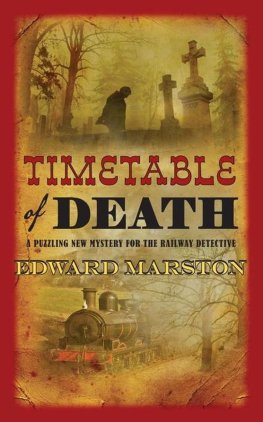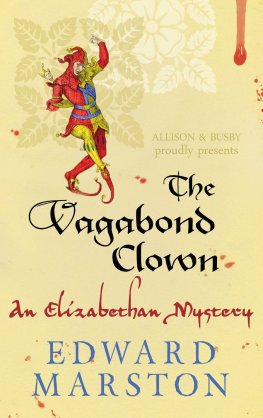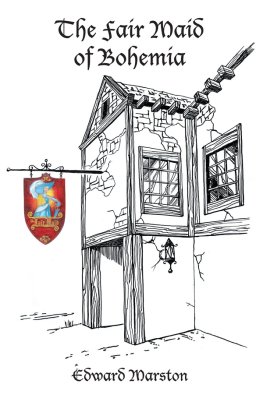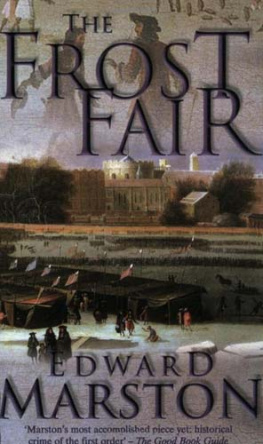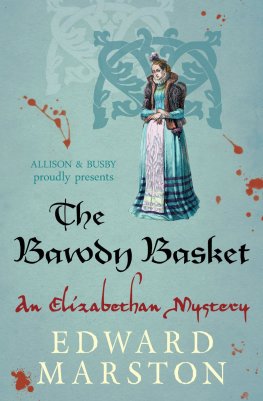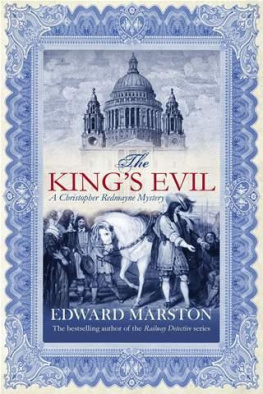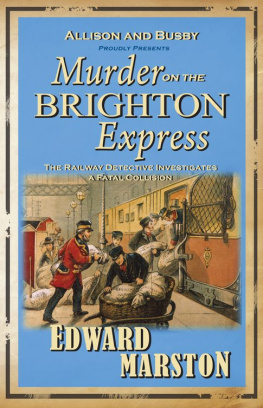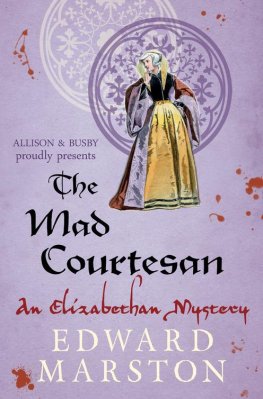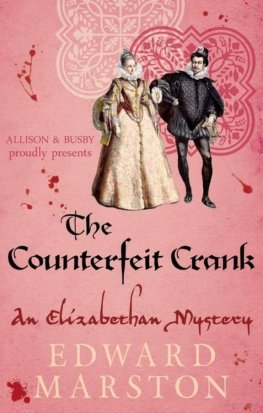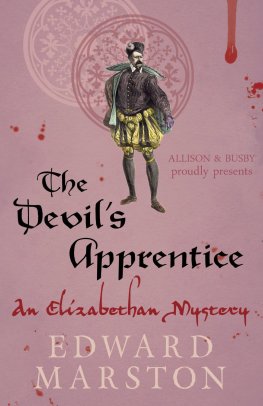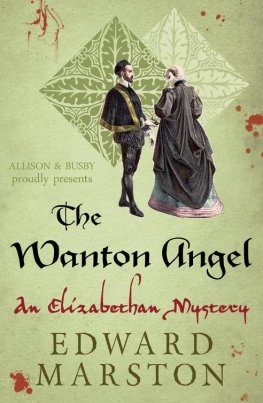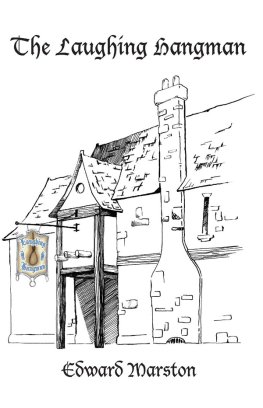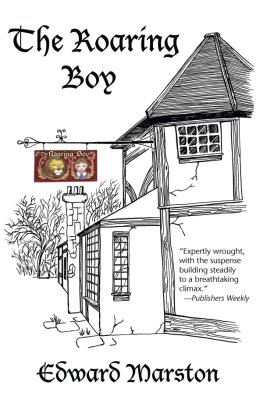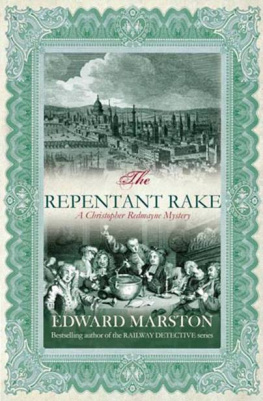Edward Marston - Timetable of Death
Here you can read online Edward Marston - Timetable of Death full text of the book (entire story) in english for free. Download pdf and epub, get meaning, cover and reviews about this ebook. year: 2015, publisher: ALLISON & BUSBY, genre: Detective and thriller. Description of the work, (preface) as well as reviews are available. Best literature library LitArk.com created for fans of good reading and offers a wide selection of genres:
Romance novel
Science fiction
Adventure
Detective
Science
History
Home and family
Prose
Art
Politics
Computer
Non-fiction
Religion
Business
Children
Humor
Choose a favorite category and find really read worthwhile books. Enjoy immersion in the world of imagination, feel the emotions of the characters or learn something new for yourself, make an fascinating discovery.
- Book:Timetable of Death
- Author:
- Publisher:ALLISON & BUSBY
- Genre:
- Year:2015
- ISBN:9780749018122
- Rating:5 / 5
- Favourites:Add to favourites
- Your mark:
- 100
- 1
- 2
- 3
- 4
- 5
Timetable of Death: summary, description and annotation
We offer to read an annotation, description, summary or preface (depends on what the author of the book "Timetable of Death" wrote himself). If you haven't found the necessary information about the book — write in the comments, we will try to find it.
Timetable of Death — read online for free the complete book (whole text) full work
Below is the text of the book, divided by pages. System saving the place of the last page read, allows you to conveniently read the book "Timetable of Death" online for free, without having to search again every time where you left off. Put a bookmark, and you can go to the page where you finished reading at any time.
Font size:
Interval:
Bookmark:
Edward Marston
Timetable of Death
PREFACE
This is a work of fiction and I have had to bend certain facts to make them fit into the narrative. I had to create a vacancy for the post of chairman of the Midland Railway and take a few liberties with the publication of the Derby Mercury and with the policing arrangements in Spondon in 1859. At the time, St Werburghs church was known as St Marys. It was rededicated to St Werburgh in the early 1890s. When I visited the church, a wedding was taking place. By contrast, the novel begins with a funeral. The murder of Enoch Stone in 1856 was an actual event. The case remains unsolved.
CHAPTER ONE
Spondon, 1859
Perched on the top of a hill, the parish church of St Mary looked down on the people of Spondon with the fond and caring eye of a doting parent. When it was built at the end of the fourteenth century it had been an imposing Gothic structure that seemed too large and grandiose for a small Derbyshire village and, even though it now served a parish of over fifteen hundred souls, its pre-eminence, architecturally and spiritually, remained. Among its multiple functions, it was the social centre of the village, the place where the faithful gathered every Sunday in their best attire to mingle with their friends and neighbours, to exchange news, to share confidences and to develop stronger bonds.
The main topic of conversation that Sunday morning had been the untimely death of Cicely Peet, a lady of some standing in the community, cut down cruelly by disease when still short of her fiftieth birthday. As the congregation listened to the handsome tribute paid to her by the vicar during his sermon, her grave had already been dug in the churchyard and the funeral was already assured of a sizeable number of mourners. There was a pervasive mood of sadness and regret and many a handkerchief was pressed into service. When it was finally over, people came slowly out of St Marys to shake the hand of the Reverend Michael Sadler and mumble a few departing words before glancing involuntarily in the direction of the fine house where Mrs Peet had lived for so many years. It was a long time before everyone had dispersed.
A blanket of sorrow lay over the whole village. Respect for the dead was not, however, a universal feeling. On the very next day, it was certainly not in evidence in the behaviour of two of the younger inhabitants.
Aouw!
Lizzie Grindle had pushed her younger brother and made him yelp.
Chase me!
Dont mank abaht, he complained.
Im farster than ter.
Gerraht!
Carnt ketch me for a penny cup o tea!
To provide more encouragement, she shoved him so hard this time that he stumbled and fell to the ground. He scrambled to his feet with the intention of striking back at her but shed already taken to her heels. Sam Grindle gave chase even though he could never outrun his sister. While she was a tall, rangy, long-legged girl of twelve, he was a short, chubby ten-year-old with a freckled face and piggy eyes. Ordinarily, he couldnt even begin to keep up with her, but the urge for revenge gave him both additional speed and a sense of purpose. Surprisingly, he began to gain on her. Lizzie was delighted that shed provoked a response. Tormenting her younger brother was her chief pastime and she was particularly adept at causing trouble then blaming it on him. She was far more guileful and inventively dishonest than Sam. As a result, it was the boy who, more often than not, felt the anger of his fathers hand.
The children of Walter Grindle, the blacksmith, were familiar figures in the village, always arguing, always making a noise, always darting about, always up to some kind of mischief, or so it appeared to onlookers. What they saw early on that Monday morning was a girl shrieking madly as she was pursued by a podgy lad issuing all kinds of dire threats against her. On the day before a funeral, it was unseemly. Tongues were clicked and dark looks exchanged. But they had no effect on Lizzie Grindle. She was in her element, goading her brother and pretending to be frightened of him before turning to give him a contemptuous giggle. While she ran on with the ease of a natural athlete, his legs began to tire and his lungs to burn. Sam was soon reduced to a painful plod.
Lizzie immediately changed the rules of the game. Instead of being a race that only she could win, it became an exhilarating exercise in hide-and-seek. She concealed herself in doorways, ducked under carts and disappeared behind a horse for several minutes at one point. Each time, her brother eventually found her but, before he could grab her, she was off in a flash to her next fleeting refuge. When she reached Church Hill she still had enough strength to run up it and enough devilry to stand there and mock him with rude gestures. Panting audibly and hurting badly, Sam lumbered bravely on, determined to get even with her somehow.
The churchyard offered a whole range of hiding places and Lizzie went skipping between the headstones in search of the best one. She quickly found it. The open grave of Cicely Peet beckoned. It was perfect. Her brother would never dream of looking in there. Untroubled by any thoughts of the impropriety of using someones last resting place as a source of childish fun, she hared across the grass and jumped happily into the grave.
It was only then that she discovered it was already occupied.
Lizzies Grindles scream of terror could be heard half a mile away.
CHAPTER TWO
The invention of the electric telegraph had been a boon to Scotland Yard. Messages that might have taken several hours to deliver by other means could now be sent in a matter of minutes. A national network was slowly being set up along the routes taken by railways and canals. Communication had therefore quickened by leaps and bounds. There was, however, an element of frustration for the recipient because the information transmitted by telegraph was often terse.
Edward Tallis voiced his usual complaint.
Why cant they give us more detail? he asked.
We must accept the limitations of the service, sir, said Robert Colbeck, tolerantly. By its very nature, a telegraph encourages abbreviation. We should be grateful for what it can do and not criticise it for being unable to send an exhaustive report of a particular crime. He glanced at the missive in Talliss hand. From where did this one come?
Derby.
Whats the name of the victim?
Mr Vivian Quayle. He was a director of the Midland Railway, hence their call for immediate assistance.
They were in the superintendents office. Wreathed in cigar smoke, Tallis was seated behind his desk with the telegraph in his hand. It would have been easier to give it to Colbeck so that he could read it for himself but a deep-seated envy made Tallis draw back from that. What the inspector was not told was that there was a specific request for him to be sent. Because his record of solving crimes on the railway network was unmatched, the press had dubbed him the Railway Detective and it was a badge of honour that Tallis resented bitterly. It grieved him that Colbeck invariably collected praise that the superintendent felt should instead go to him.
Tallis was a solid man in his fifties with short grey hair and a neat moustache. His spine had a military straightness, his eyes glinted dangerously and, when roused, his rasping delivery could penetrate the walls of his office with ease. Colbeck, by contrast, was tall, slim, handsome, lithe, soft-spoken and twenty years younger. He was also something of a dandy with an elegance that Tallis thought inappropriate in one of his detectives. Since the two men could never like each other, they settled for a mutual respect of each others considerable virtues.
May I see the telegraph, please? asked Colbeck.
Font size:
Interval:
Bookmark:
Similar books «Timetable of Death»
Look at similar books to Timetable of Death. We have selected literature similar in name and meaning in the hope of providing readers with more options to find new, interesting, not yet read works.
Discussion, reviews of the book Timetable of Death and just readers' own opinions. Leave your comments, write what you think about the work, its meaning or the main characters. Specify what exactly you liked and what you didn't like, and why you think so.

